Kirigami 2.0
Responsive Kirigami
A Project by Jenny Sabin Lab
Cornell University
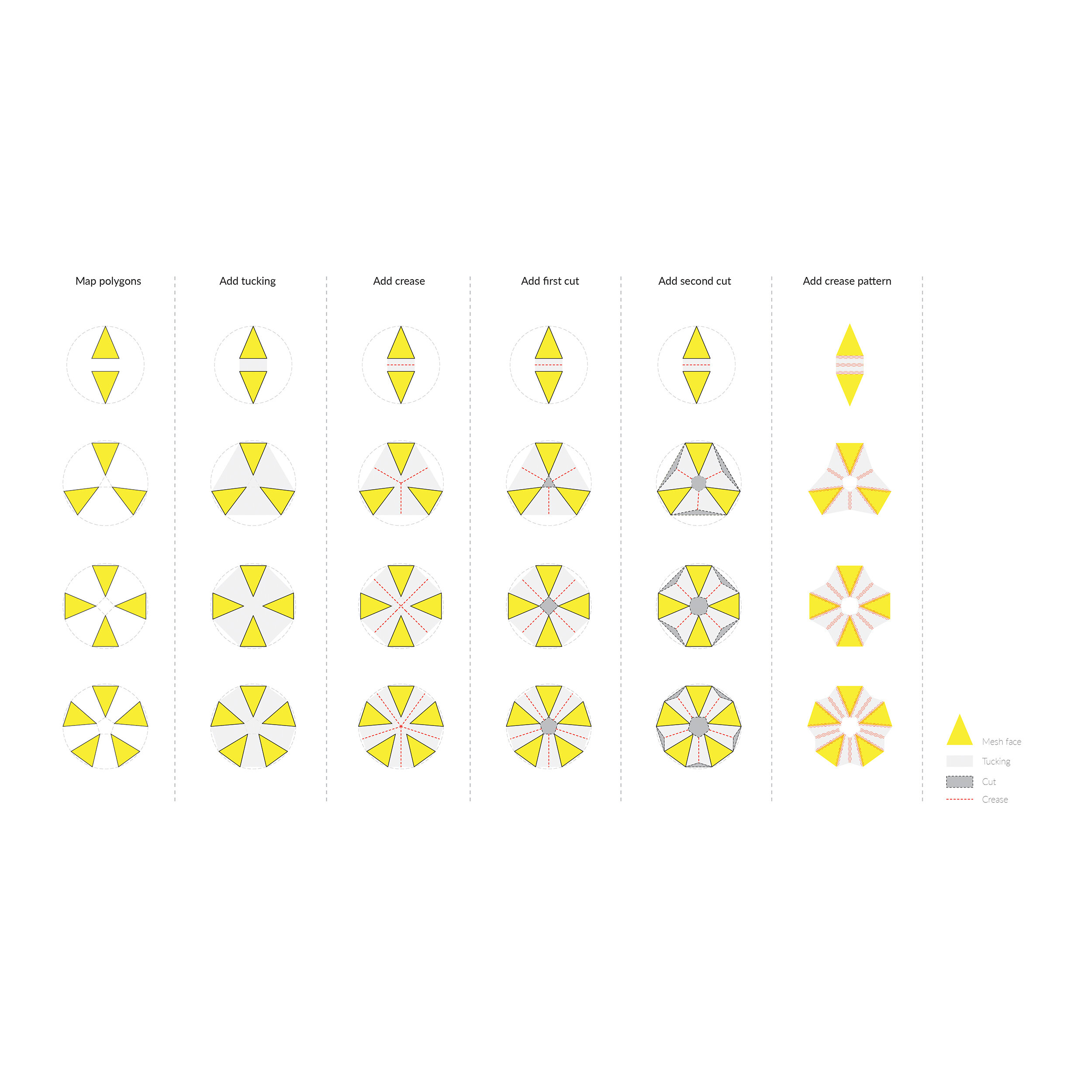
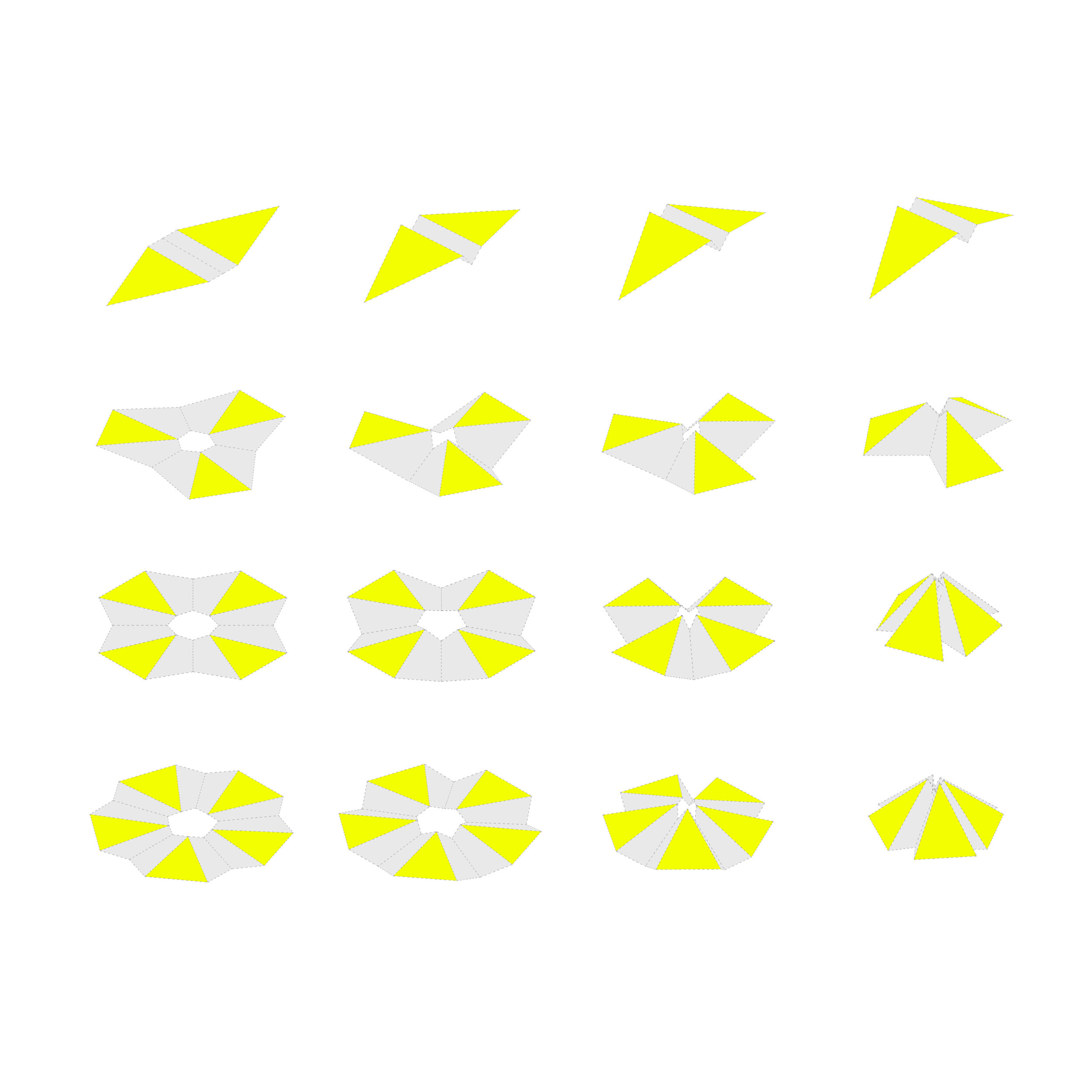
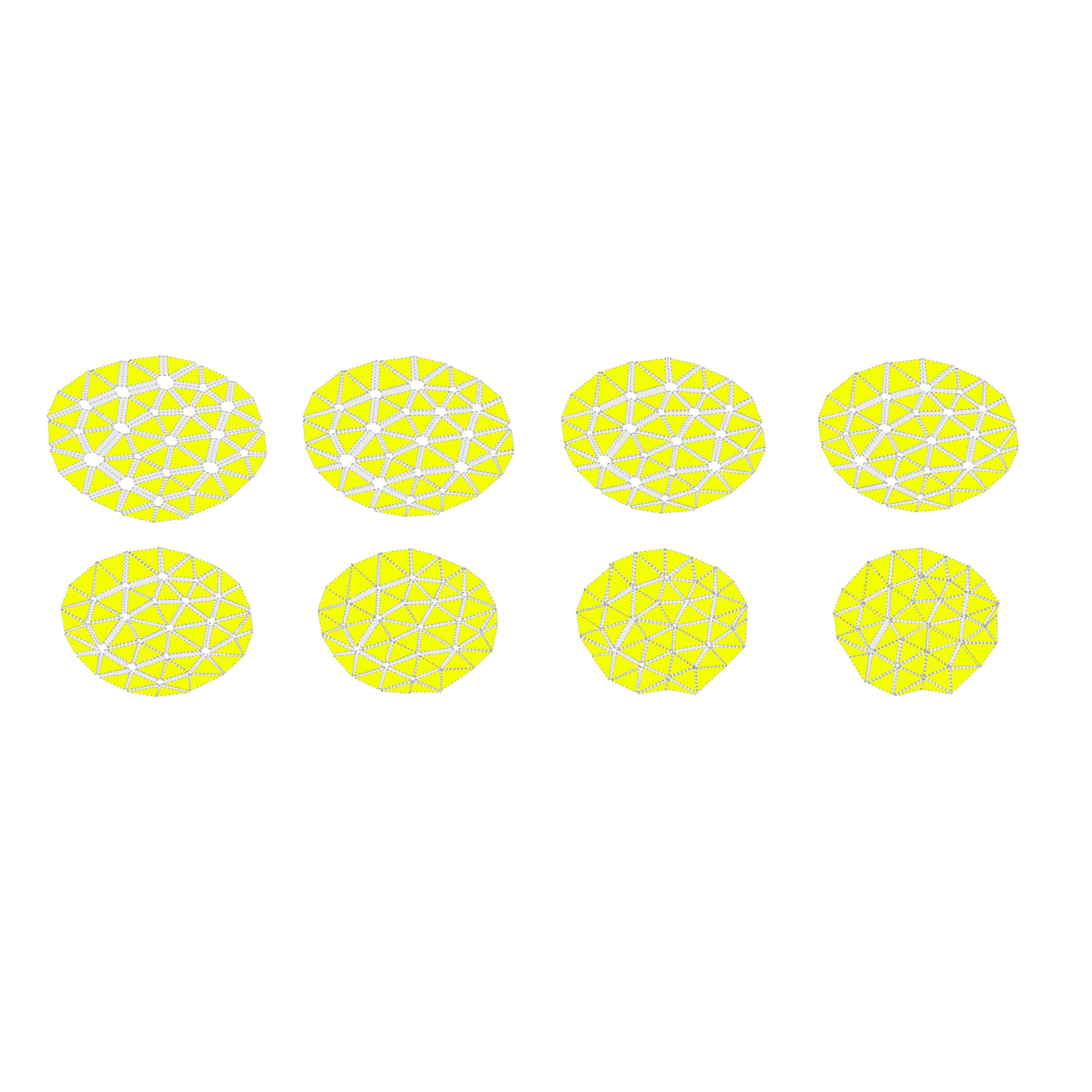
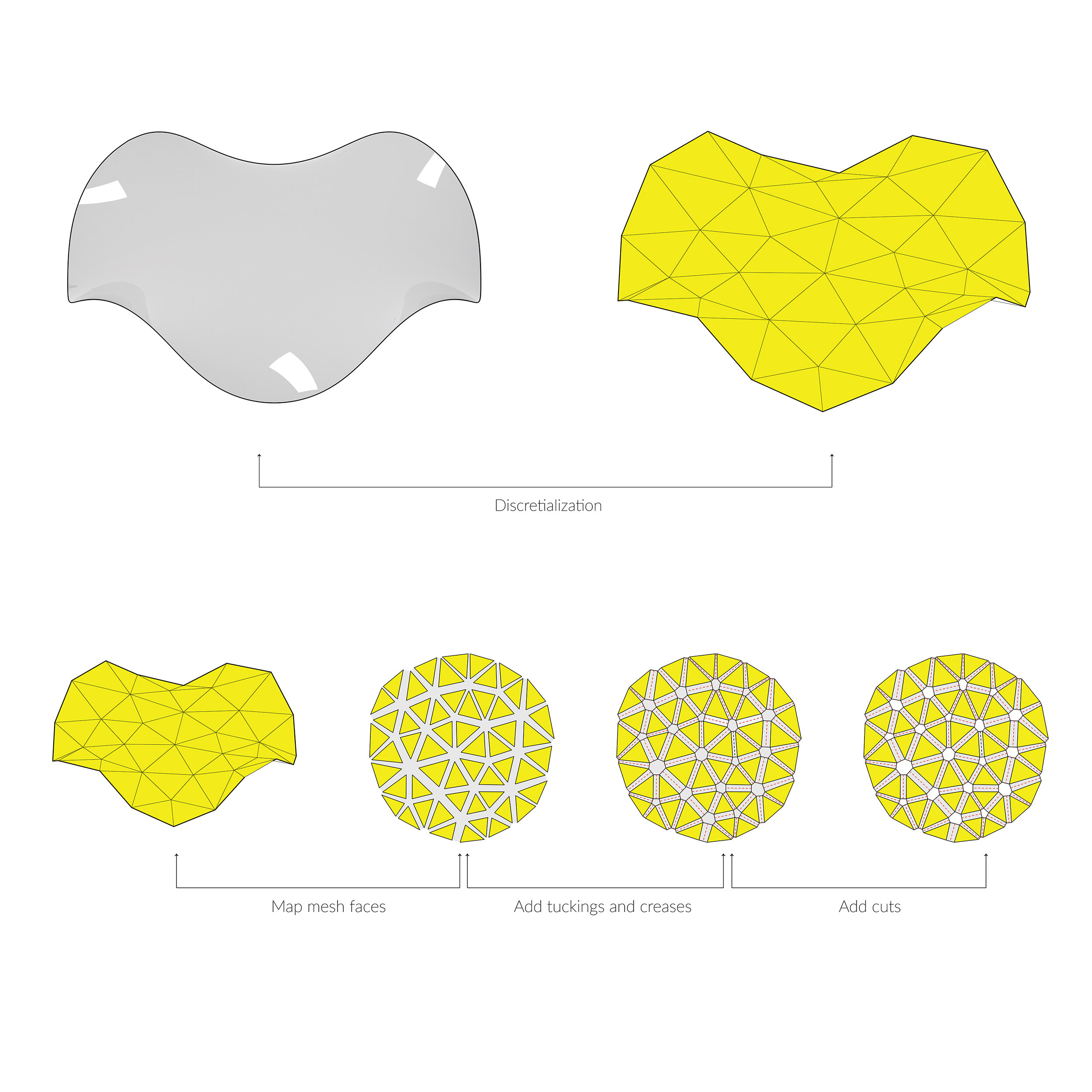
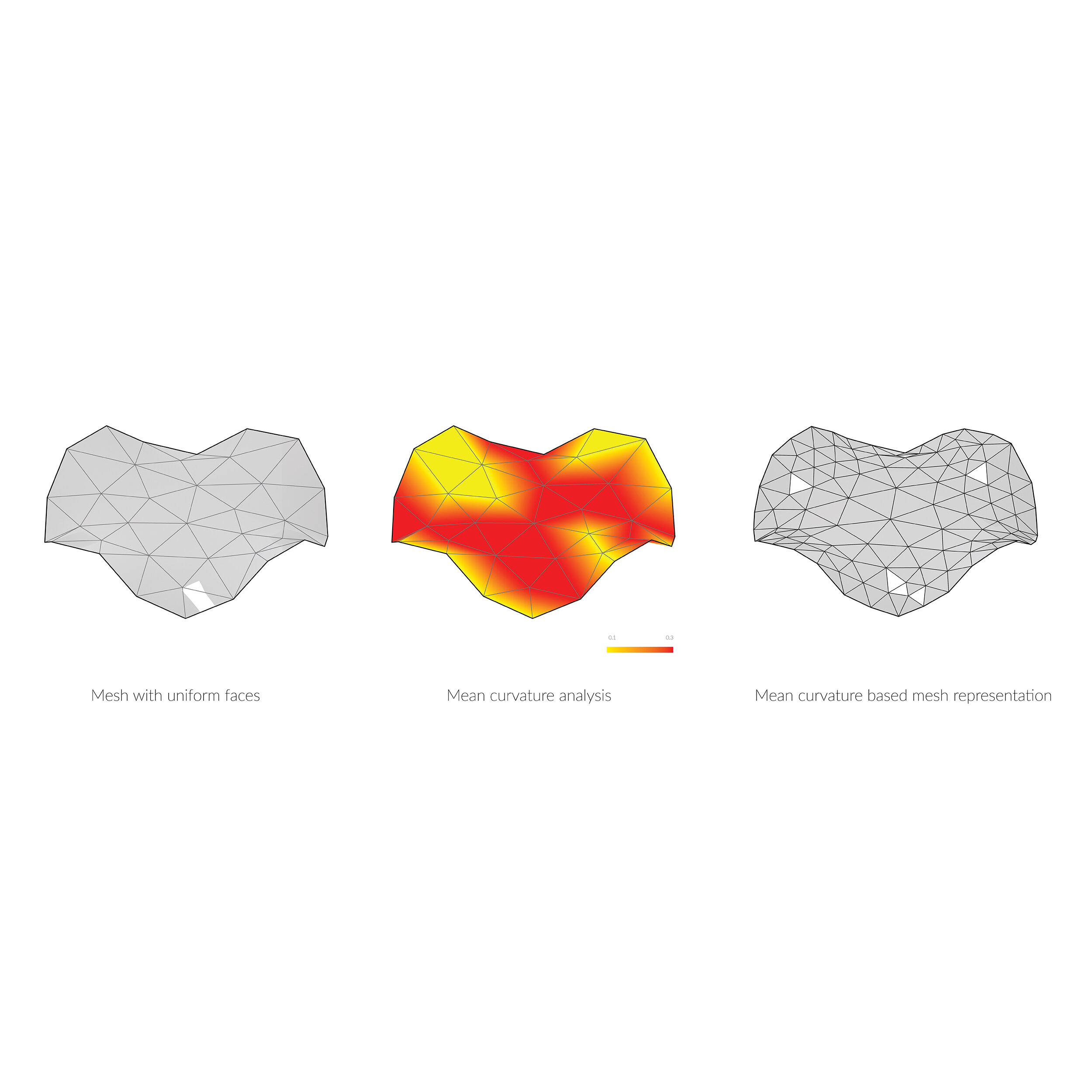
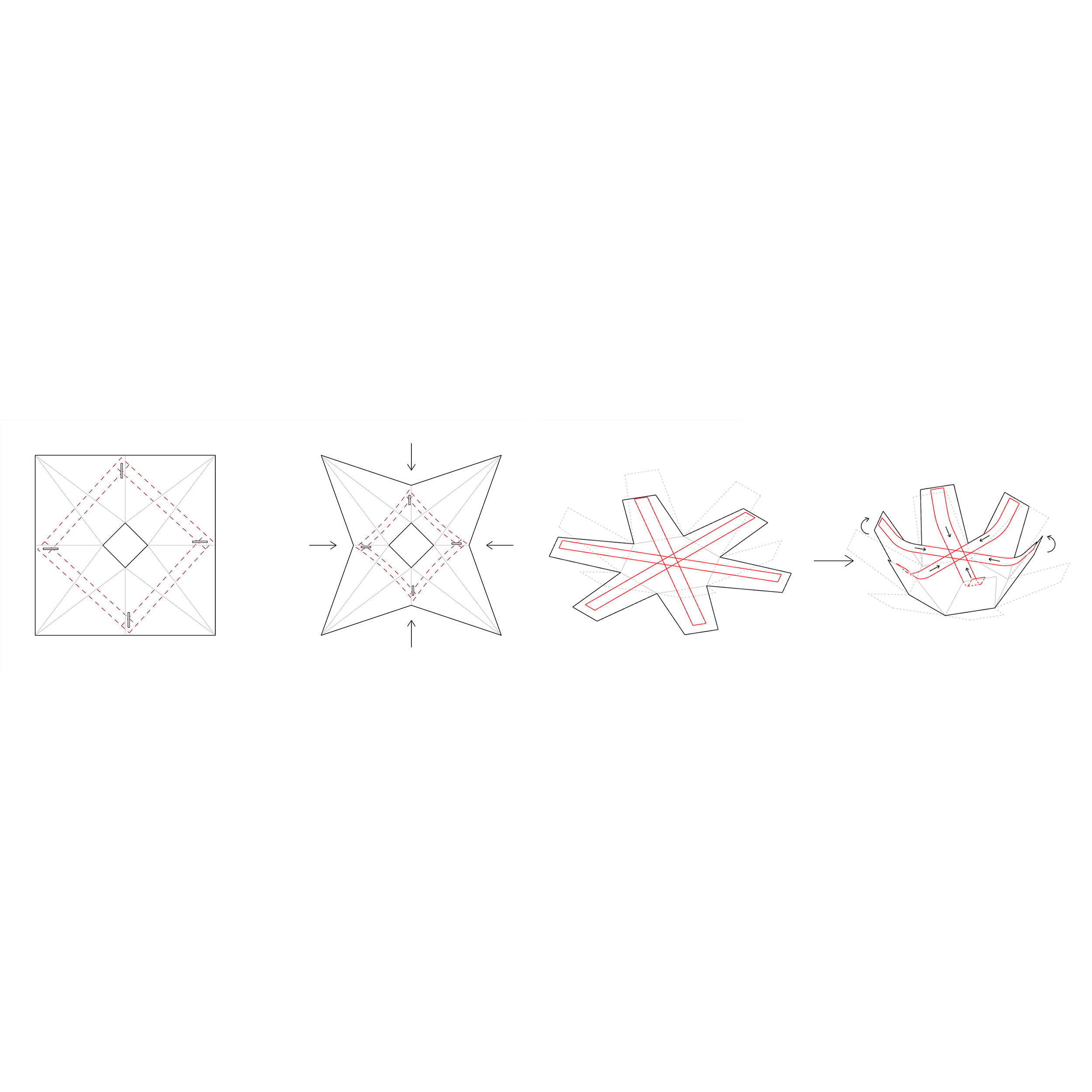
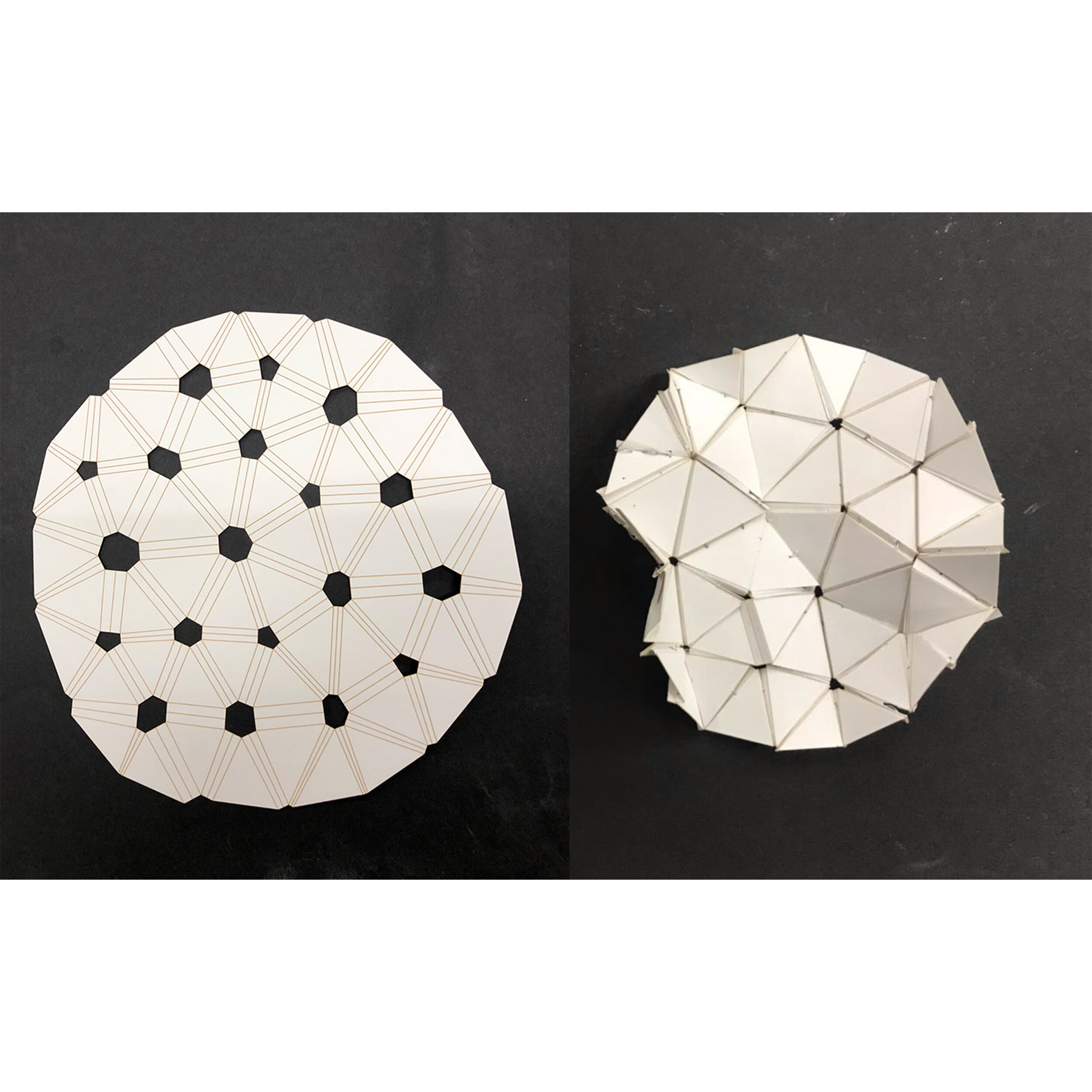
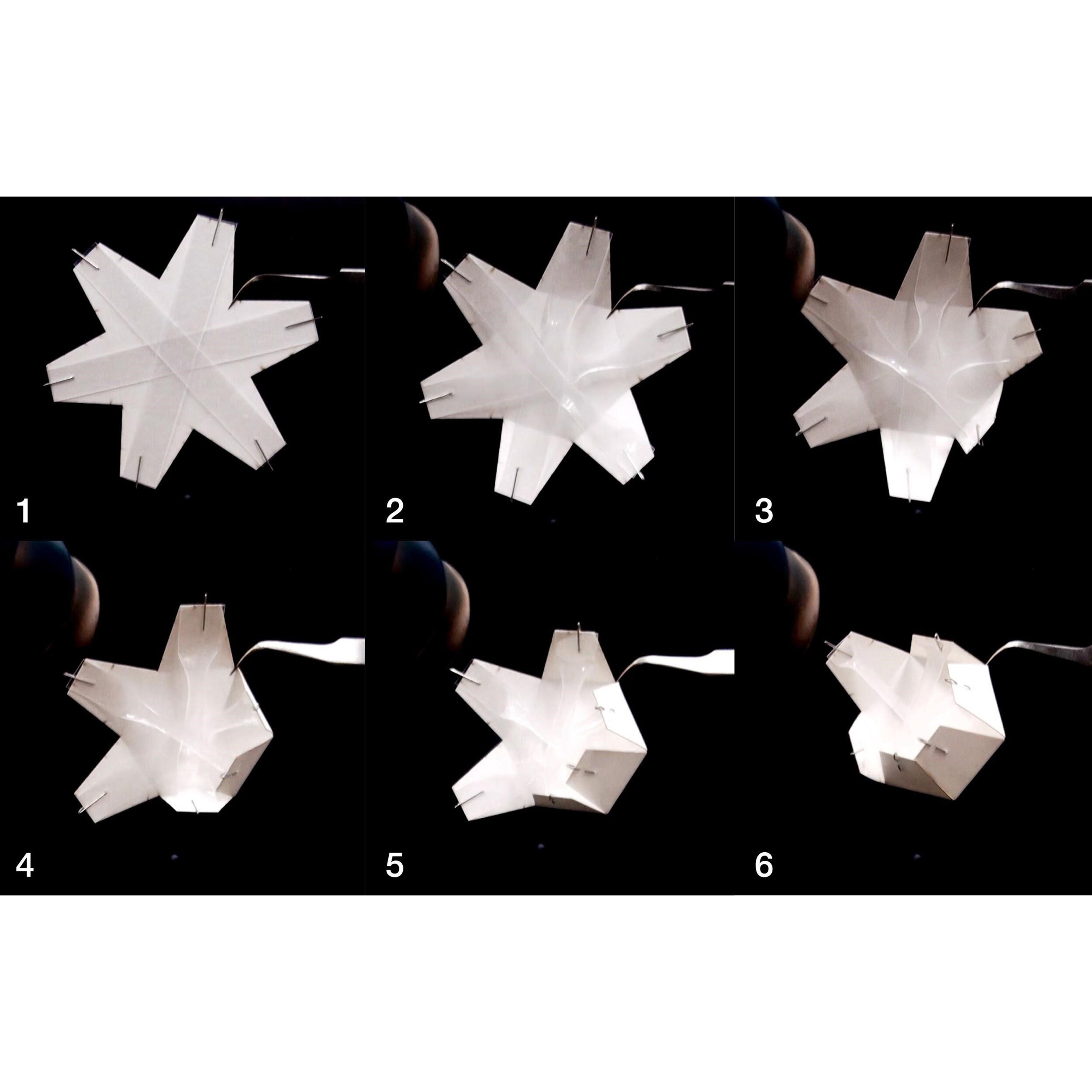
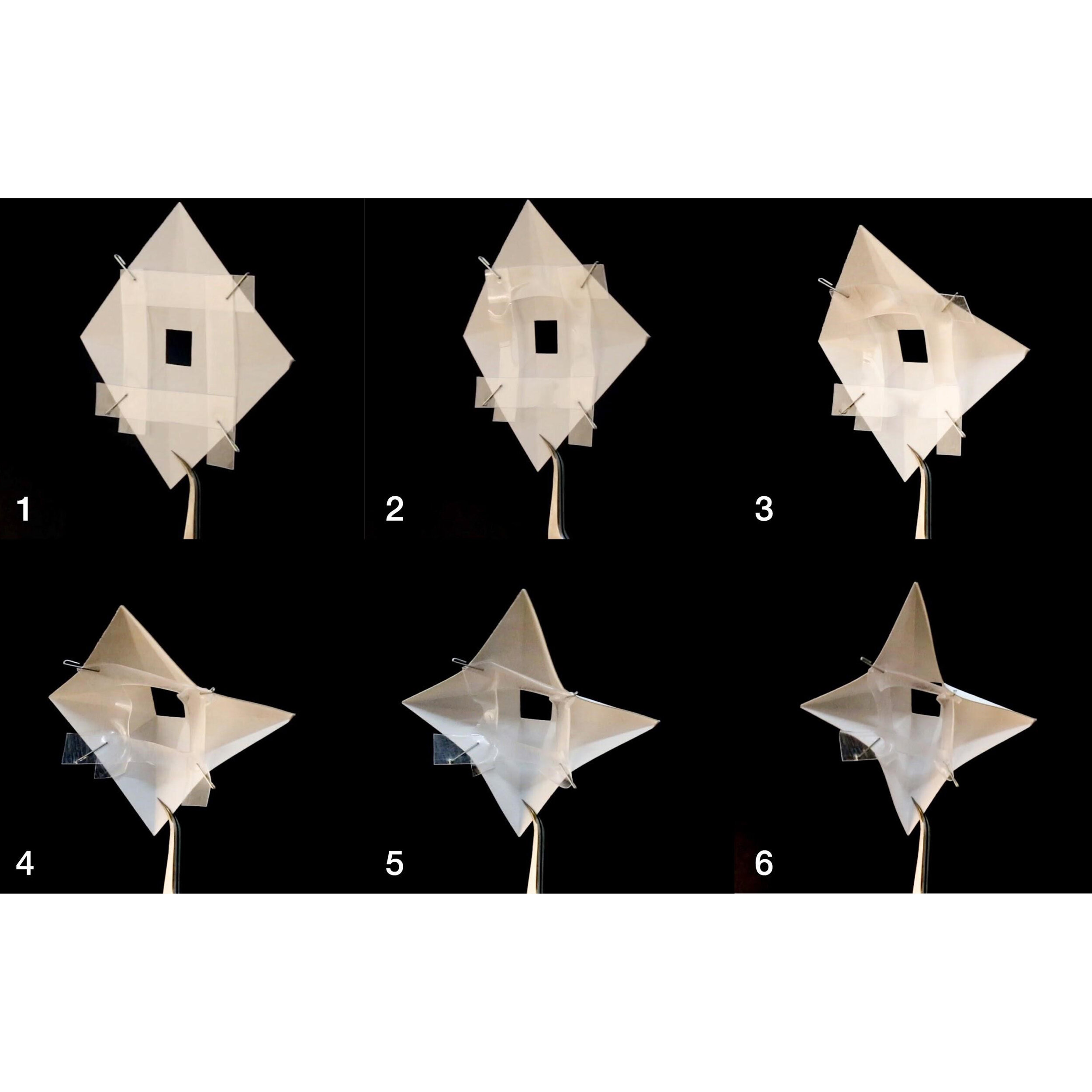
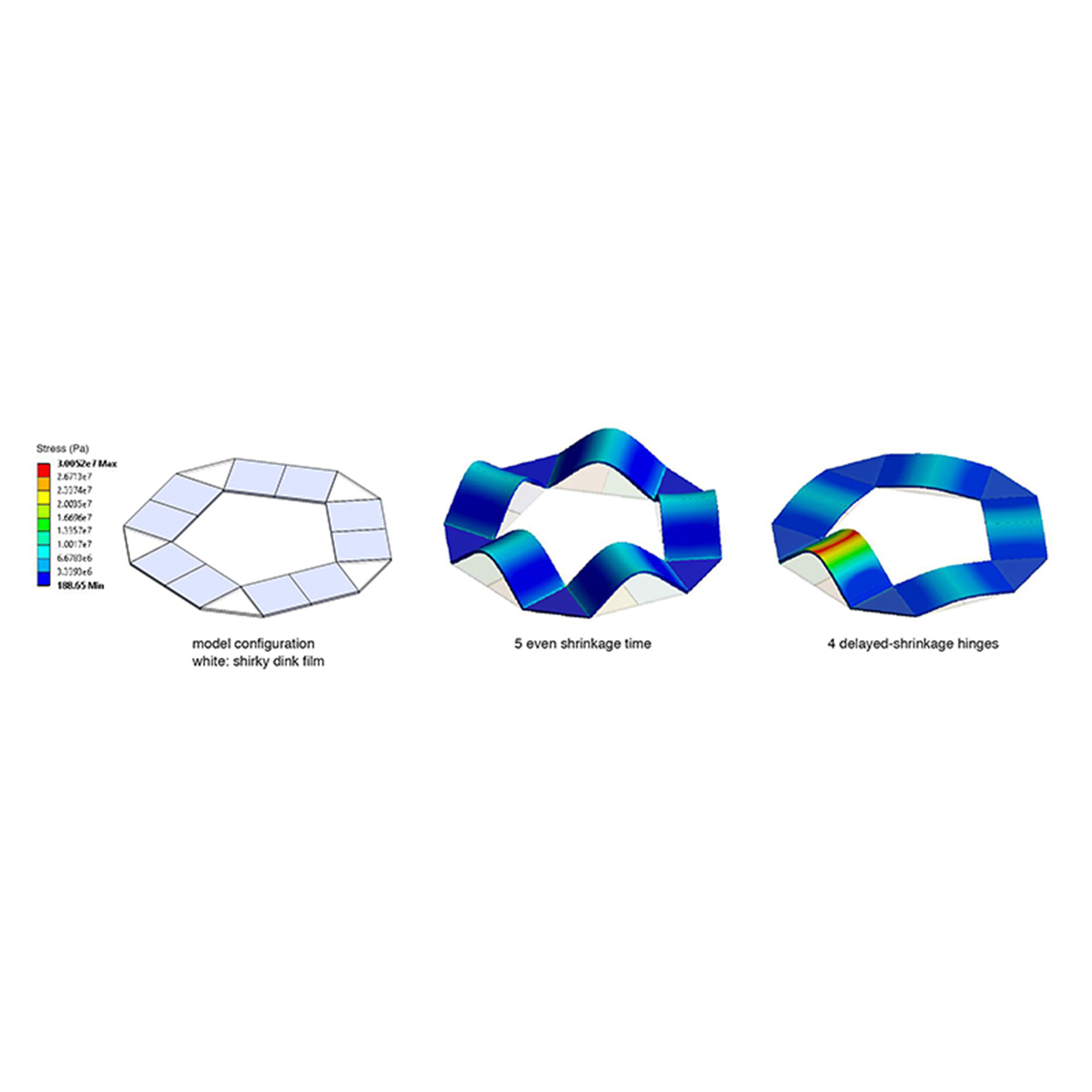
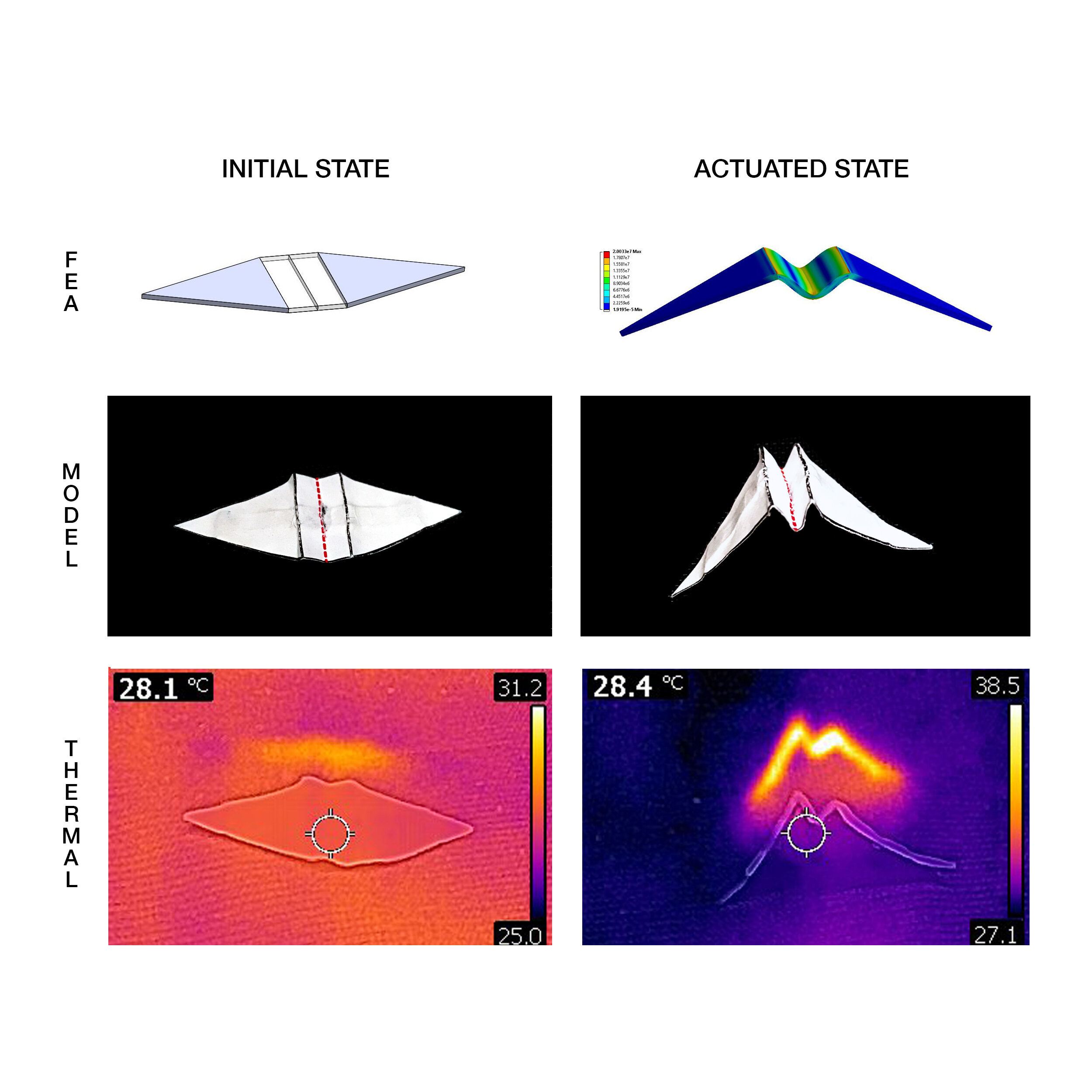
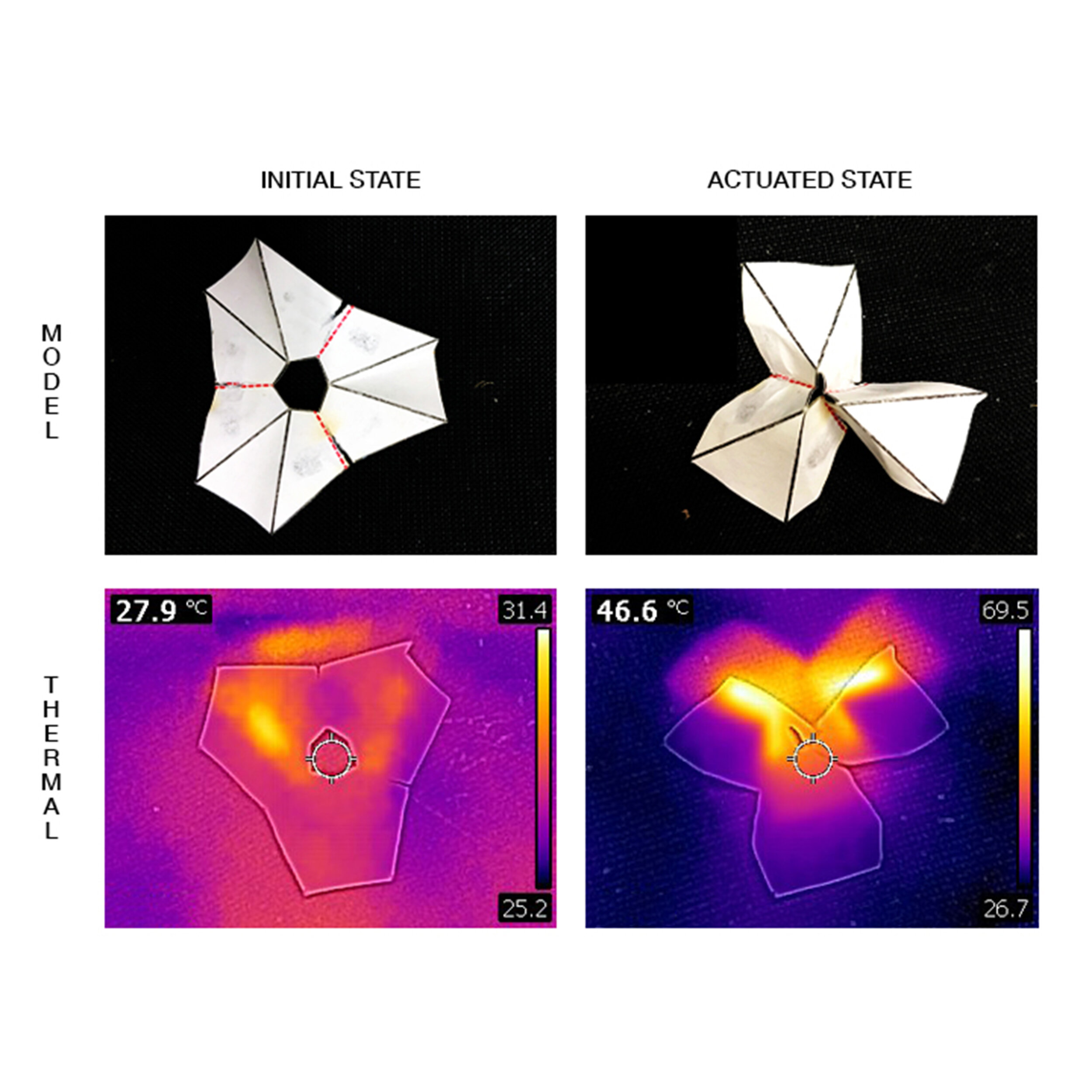
Abstract
This paper explores the possibilities of active kirigami geometry — folding with the addition of strategically placed cuts and holes — through geometry, simulations, and responsive materials exploration. We have developed a novel method for kirigami pattern design through mesh optimization of surfaces, distribution of tucks across the discretized mesh, and the addition of cut and fold patterns. Based on our previous materials research on dual composite kirigami materials in 2016, we propose to focus on both one-way and two-way actuated materials, including shrinky dink films, shape memory alloys, and shape memory polymers. We have successfully characterized the materials, and as a proof of concept, produced models that utilize the above-mentioned materials as environmentally-actuated hinges in folded sheet systems (2D to 3D).
NSF EFRI ODISSEI: Cutting and Pasting - Kirigami in Architecture, Technology, and Science (KATS)
Kirigami from the Japanese kiru, “to cut,” offers a previously unattainable level of design, dynamics, and deployability to self -folding and -unfolding materials from the molecular to the architectural scale. To achieve this we will cut and join DNA-polymer hybrids to build on the nanoscale and, simultaneously, use three-dimensional printing and modeling to study and prototype geometries on the macroscopic scale. Jenny Sabin and Dan Luo, professor of biological and environmental engineering, are among the lead investigators on a research project to produce “buildable, bendable and biological materials” for a wide range of applications. Sabin and Luo shared a $2 million, four-year NSF grant with University of Pennsylvania researchers Randall Kamien, physics, and Shu Yang, materials science. The project is intended to bring new ideas, motifs, portability and design to the formation of intricate chemical, biological and architectural materials.
